While the Dungeon’s Master team enjoys some well-deserved vacation time, we’re breaking out the greatest hits and shining a spotlight on a few of our favourite articles from 2013. We’ve searched for hidden gems that our newer readers might have missed and our long-time readers will enjoy reading again. Enjoy a second look at these greatest hits from Dungeon’s Master.
It could be argued that the question “Should the DM use a screen?” is becoming less relevant in today’s digital world. At my home game the last two DMs kept all of their notes – including maps, monsters, and the module itself – exclusively on their digital devices. DMs don’t have to decide if they’ll use a screen or not, they now have to decide if they’re using a digital device or not. And if the answer is yes the original question is moot.
Using a digital device gives the DM all the secrecy of a screen without erecting a physical barrier between him and the players. The notes and references on the DM’s side of the screen are unnecessary as the DM can search for anything he doesn’t know off the top of his head with a few keystrokes.
Players who were once inspired by the fantastic artwork on the players’ side of the screen may now see dozens of images of monsters, NPCs, and locations in one session as the DM calls them up on his tablet. And with each new game the images will keep changing, unlike a static screen that eventually gets tiresome to look at.
If a DM with a digital device decides to use a digital dice roller he’ll eliminate any need for a screen at all. None of the DMs I play with use a digital dice roller; we all still roll the polyhedral dice on the table. Since we’re all roll in the open DMs this isn’t an issue.
As more DMs and players embrace emerging technologies and use them as part of their table top gaming experiences some of the gaming traditions and conventions will disappear, like the debate on whether or not to use a screen. But as long as people still play RPGs at the table there will be some who keep it old school. Use the screen or not, it’s up to you. Just be sure your decision makes sense for you and your group.
From June 19, 2013, Dungeon’s Master once again presents: Should the DM Use a Screen?
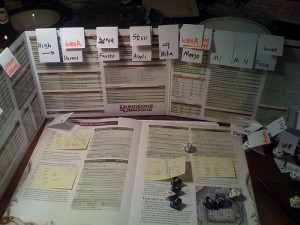
The DM’s screen – the great barrier that separates the DM from the players. Behind the screen the DM can do whatever he pleases. Personally I detest the DM’s screen. It forms a literal barrier that divides the table and cuts the DM off from the rest of the group. I feel that the screen only serves to perpetuate the incorrect belief that it’s the DM vs. the players. The screen denotes exclusivity and secrecy and in my vast gaming experiences it often gives the DM a false sense of self-worth, self-importance and power over the rest of the table.
Obviously the DM’s role in the game is different from that of the players. Yes, the DM has more to do, and controls all of the monsters, and decides on how things in the world play out, so I understand why some DMs get drunk with power. But there’s a simple way to level the playing field and bridge any ill will between the DM and players, and that’s to stop using the screen all together. I realize this may be scary for some DMs, so we’ll look at the most common reasons for using a screen and review the pros and cons of each.
Secrecy
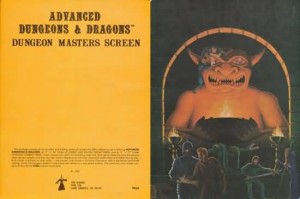 Despite my dislike for the DM’s screen, it can be a useful tool and does have a place at the gaming table if you want it to. The most obvious reason to use the screen is secrecy. If you need to have something in front of you as the DM, but you don’t want the players to see what that something is, use the screen. Typically this would include monsters the PCs haven’t yet encounters, or maps with traps and secret doors clearly marked.
Despite my dislike for the DM’s screen, it can be a useful tool and does have a place at the gaming table if you want it to. The most obvious reason to use the screen is secrecy. If you need to have something in front of you as the DM, but you don’t want the players to see what that something is, use the screen. Typically this would include monsters the PCs haven’t yet encounters, or maps with traps and secret doors clearly marked.
If you’re a DM who chooses not to use a screen you need to be mindful of wandering eyes. If you keep a copy of the master map in plain view of the players sitting next to you, then expect them to look for the secret doors in the correct places. If you have the Monster Manual open to the page you need, expect the players who can see the Rust Monster’s picture to caution the PCs wearing metal to stay back. The simplest way to avoid these problem is to keep things covered or out of sight until needed. Alternatively, one way I’ve messed with players who steal glances at my notes is to plant a few red herrings on the map or leave the books open to monsters they will never fight. They learn quickly not to trust what they see and eventually stop looking.
Another reason for secrecy, especially for less experienced DMs is to keep theGaming Jerks from telling you what to do or what you’re doing wrong. For example, when I use minions I like to roll for their damage rather than use a set number. Players know monsters that always do the same damage are likely minions and treat them as such. By rolling damage I keep the players on their toes for a few rounds. However, I once ran an FLR adventure where a player who could see the stat block for the minions literally reached over, pointed at the monsters’ set damage, announced to the table that the monsters were minions, explained to me that they should only be doing 6 damage each, and then told me that I wasn’t running them correctly. I politely told the player that my changes were intentional and I continued doing what I was doing despite his gross violation of the D&D social contract. Had I been a less experienced or less confident DM this could really have shaken me up. This is a problem that would have been totally avoidable had I been using a screen.
Separating player knowledge from character knowledge
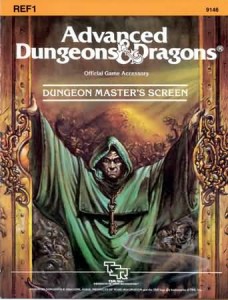 This is the only reason that I advocate using a screen. Sometimes players have a difficult time accepting that their characters are unaware of something that they as players know with absolute certainty. For example, a player decides that his Rogue is going to search the chest for traps before opening it. Let’s say he rolls a 2 and the DM tells him there are no traps. Immediately the other characters say they want to check it as well. Had the Rogue rolled a natural 20 and been told there were no traps no one else would have bothered checking. After all this is the Rogue’s area of expertise, if he says there are no traps there must not be any traps. But because the players saw the roll they behave differently. I’ve also seen this happen in social situations when poor Diplomacy checks are made or in dungeons when the party is searching to find secret doors. If the DM made these rolls secretly on behalf of the PC the players would have to decide if they accept a failure as a poor roll or a result of circumstances. If the party agrees to let the DM do secret check for them then I wholehearted endorse the use of a screen for this purpose.
This is the only reason that I advocate using a screen. Sometimes players have a difficult time accepting that their characters are unaware of something that they as players know with absolute certainty. For example, a player decides that his Rogue is going to search the chest for traps before opening it. Let’s say he rolls a 2 and the DM tells him there are no traps. Immediately the other characters say they want to check it as well. Had the Rogue rolled a natural 20 and been told there were no traps no one else would have bothered checking. After all this is the Rogue’s area of expertise, if he says there are no traps there must not be any traps. But because the players saw the roll they behave differently. I’ve also seen this happen in social situations when poor Diplomacy checks are made or in dungeons when the party is searching to find secret doors. If the DM made these rolls secretly on behalf of the PC the players would have to decide if they accept a failure as a poor roll or a result of circumstances. If the party agrees to let the DM do secret check for them then I wholehearted endorse the use of a screen for this purpose.
Quick reference
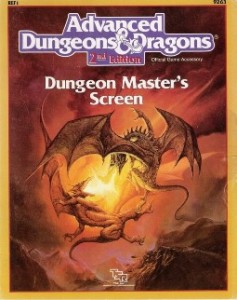 Most iterations of the DM’s screen are more than just a gatefold piece of cardboard; on the side facing the DM there are usually quick reference charts. The information included on the screen tends to be things that come into play frequently, but not frequently enough that you’re likely to have it memorized. Usually it’s charts or details that scale with level. These are certainly helpful, especially for rookie DMs, but all of these details are available in other sources.
Most iterations of the DM’s screen are more than just a gatefold piece of cardboard; on the side facing the DM there are usually quick reference charts. The information included on the screen tends to be things that come into play frequently, but not frequently enough that you’re likely to have it memorized. Usually it’s charts or details that scale with level. These are certainly helpful, especially for rookie DMs, but all of these details are available in other sources.
If this is the only reason you’re using a screen, I’d suggest marking the pages of your Rules Compendium or DMG with tabs so you can find them quickly when you need them thereby eliminating the need for a screen. In my experience, the players are often just as good a resource as the charts on the screen. If I’m not sure of something I can ask the player and usually someone knows the correct ruling. Alternatively as the DM I can and often do, just go with my gut and make a call on the fly.
Rolling

 I’m a big believer that all dice rolling should be done in plain sight in front of everyone. After all, for me at least, rolling the dice is one of the most exciting parts of the game. Whether I’m rolling to hit or it’s the DM rolling to hit me, the thrill of seeing that d20 roll and eventually stop on a number that will spell success or failure thrills me. When I’m a player and I roll a natural 20 I cheer. I also cheer whenever someone else rolls a natural 20. It’s usually a big deal when it happens so I like to treat it as such. As the DM my reaction is the exact opposite. My goal isn’t to kill the PCs, so when I roll a 20 I usually cringe and make a face of disgust because I know a PC is about to get raked over the coals.
I’m a big believer that all dice rolling should be done in plain sight in front of everyone. After all, for me at least, rolling the dice is one of the most exciting parts of the game. Whether I’m rolling to hit or it’s the DM rolling to hit me, the thrill of seeing that d20 roll and eventually stop on a number that will spell success or failure thrills me. When I’m a player and I roll a natural 20 I cheer. I also cheer whenever someone else rolls a natural 20. It’s usually a big deal when it happens so I like to treat it as such. As the DM my reaction is the exact opposite. My goal isn’t to kill the PCs, so when I roll a 20 I usually cringe and make a face of disgust because I know a PC is about to get raked over the coals.
Rolling behind the screen breeds distrust. Players will often wonder if you’re being honest about the results. This is especially true when the dice get really hot or really cold. Most players don’t want to be coddled; they want the dice to determine the course of the events good or bad. If the DM is fudging numbers the players feel cheated. By rolling in plain sight there’s never any doubt. I’ve seen many DMs use the screen but do all rolling in front of the party. This is a reasonable compromise that I’m ok with.
When it comes to rolling damage I’m less invested. If it’s a hit I don’t care if the damage dice are rolled in front of me or not. As a DM I will often pre-roll damage to make things run faster, and I often encourage players to do the same. In my mind the hit that matters more than the damage.
If you’re a DM who does roll behind the screen then take advantage of it. If the party is getting absolutely destroyed, consider fudging the numbers a bit. I now I already said I like the dice to fall where they may, but a good DM knows that from time to time the party will need some help. I’m not saying all the time, but there will be rare occasions when you know that if things keep going the way they’re going it will be a TPK. In these cases switch to a smaller damage die, or cut the number you roll in half. If you’re rolling in the open this is a lot harder to do and not be noticed, but if you’re behind the screen you can throw the PCs a bone every now and then.
To screen or not to screen?
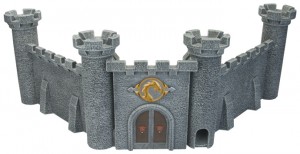 In my opinion DMs should not use the screen. Although there are a few good reasons why you may want to use it, in my mind the reasons for not using it far outweigh the reasons for using it. Anything that separates the DM from the players is bad for the game. The gaming experience should be one of inclusion and shared story-telling. By using the screen you immediately create physical division and a feeling of taking sides. By foregoing the screen and embracing the group dynamic, you’ll likely find that you have a more positive gaming experience and that it’s less likely to create and atmosphere of players vs. DM.
In my opinion DMs should not use the screen. Although there are a few good reasons why you may want to use it, in my mind the reasons for not using it far outweigh the reasons for using it. Anything that separates the DM from the players is bad for the game. The gaming experience should be one of inclusion and shared story-telling. By using the screen you immediately create physical division and a feeling of taking sides. By foregoing the screen and embracing the group dynamic, you’ll likely find that you have a more positive gaming experience and that it’s less likely to create and atmosphere of players vs. DM.
Do you use the screen? What other pros and cons can you add to this discussion? What do you feel are the best and worst reasons for using a screen? What game do you think has the best screen?
 Looking for instant updates? Subscribe to the Dungeon’s Master feed!
Looking for instant updates? Subscribe to the Dungeon’s Master feed!
4 replies on “Greatest Hits 2013: Should the DM Use a Screen?”
I don’t use a screen – I used to, but I got rid of it to remove all temptation to fudge dice.
Regarding secrecy, I honestly can’t think of anything that as a DM I need to keep secret so badly that I need to put it behind a screen. I don’t care if players look at my stat blocks or see my notes.
Regarding “player knowledge and character knowledge,” I think this is exactly why “roll to know” checks should be avoided. Rolling low and getting a “you don’t know” is a boring outcome that doesn’t advance the story. And, with players who try to failure mitigate, it just encourages a pile-on in the hopes that someone hits the DC.
Instead of “roll to know,” it would be better as a “roll to do.” The rogue can search for traps, but if he fails, instead of “you don’t know if there are any traps or not… and anyone who reads anything into the fact that he rolled a 2 is a filthy metagamer!” it should be “yes, you find a trap – the arrow lodged in your abdomen implies that there is definitely a crossbow trap over here! Take 8 damage!”
I do use the DM screen, and I love it. I use it for the following reasons:
– Secrecy, as mentioned above. I run a lot of mystery plots, and it’s more than just monsters and maps that I don’t want the players seeing.
– Organization. I get messy behind the screen, so it contains my piles of discarded crib sheets, notes, maps, handouts, etc. and forces me to keep cleaning up my designated space.
– Initiative tents. It’s just handy!
– Quick reference. I’m fortunate to have the latest DM screen with the correct 4e skill DCs, and that’s damn useful all the time. See “organization” above re: feasability of quickly finding a tabbed reference sheet mixed into my mess. I built a custom Director Screen for Night’s Black Agents with quick reference built in.
The only thing I dislike about the DM screen is that I MUCH prefer to roll the dice in the open, with 4e. I have a lot of trust in 4e, and the times I’ve fudged the dice, almost always in the PCs’ favor, I’ve regretted it. The DM screen gives me the temptation to fudge the dice.
Now, I used to run a lot of World of Darkness (new and old), and in THAT system, fudging the dice is almost necessary. I used to run a lot of CP2020 – same deal. A system that’s not as tightly balanced generates shit results.
I’ve since learned to say “well the dice said XYZ, but I’m ruling RST” — as long as it’s in the players’ favor. This has the twofold benefit of being honest and giving the players an untainted view of the system’s hard edges. If I had been doing this in Cyberpunk 2020, the players would have trusted me more (that I was on their side when the system screwed them) and shown them that the system wasn’t as hot as they thought. And as mentioned above, I almost always defy the dice in their favor anyway. 100% of the rare times I’ve fudged dice against the players, it’s been a mistake.
I run my game from a virtual tabletop with players scattered all over the country so a screen isn’t an issue. However, when I do run face to face games I do like to use a screen. I keep notes of names and creatures either sticky noted to the screen near possible roll tables that may be needed etc. I also tend to set it cockeyed to the players, so that it doesn’t form a “barrier” between us, but rather just keeps my notes in easy look.
As for rolls, I don’t have rolls in secret. Including “roll to know” rolls. I don’t use them in the typical manner. I don’t use the DC as a hit or miss proposal like the combat roll. In a situation where there is knowledge gain, I don’t simply take the lazy way out and tell the PCs “You don’t know anything.” I give them information in degrees. A low roll is going to be hearsay remembrance, and the information will hold SOME truth, but will be inaccurate. A high roll will come with information that comes with a source, “You remember from experiments you did in Mage college, that this creature does X,y,z” so the PCs can then either accept the knowledge or discard it.
In skill rolls like a detect traps, I generally do the same. As the poster above stated, a really low roll (5-10 under the DC) is going to trigger it. “UH, guys, there’s a trap…*gears start grinding as the ceiling starts to lower*” but a high roll is going to give them specific information about the trap, which I will then, at times, assign bonuses to the disable roll that is sure to follow. After all, the more they know about the trap, the better the chance should be to disarm it.
I try to use this rule of thumb with all skill rolls. To give more descriptive responses to what the rolls dictate. If the rolls get responses that elicit conversation between PCs, then that makes for a much more engaged table.
[…] some debate in the modern gaming world over whether a Game Master should even use a screen. This great article on Dungeonmaster.com does a far better job of answering that question than I ever could, so I won’t tackle the […]